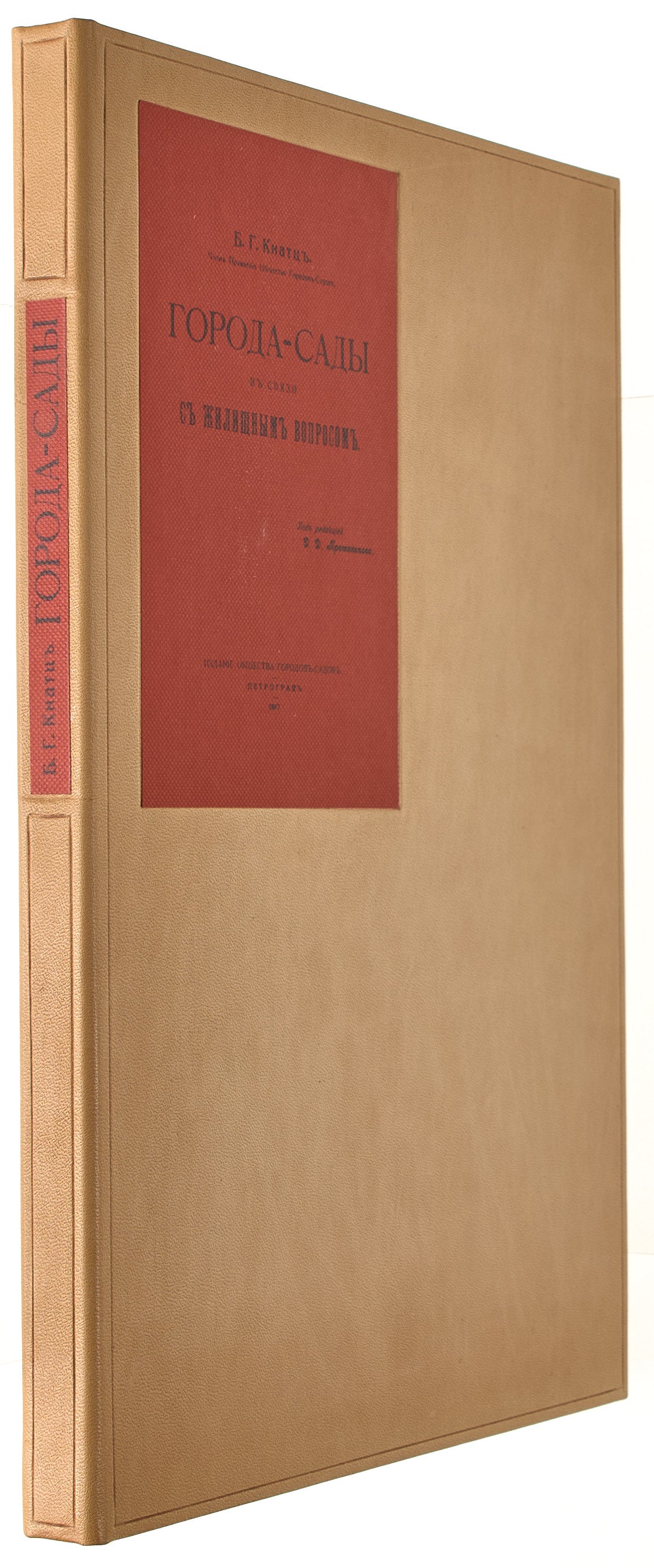Knatts, B.
Garden Cities in Relation to the Housing Question. First edition.
Garden Cities in Relation to the Housing Question. First edition.
Couldn't load pickup availability
Knatts, B. [Garden Cities in Relation to the Housing Question]. Goroda-Sady v Svyazi s Zhilishchnym Voprosom.
Edited by D. Protopopov.
Petrograd, Izdanie Obshchestva Gorodov-Sadov, 1917.
8vo, 59, [1] pp., ill.
In original wrappers and contemporary clamshell box.
In good condition, cracks to spine, lightly browned cover, carefully repaired, owner’s mark to front cover, bookseller’s stamps and marks to back cover.
First edition.
This early Russian edition explores the Garden City movement—an urban planning concept centered around the creation of ideal residential communities characterized by a balanced mix of residential areas, industry, and agriculture, all within self-contained districts surrounded by green spaces. The Garden City concept was originally formulated by the English town planner Ebenezer Howard in 1898. It emerged as a potential solution to address overpopulation and to enhance the quality of urban life.
This monograph primarily focuses on realized projects in England, including Letchworth Garden City (the world's first Garden City), Bournville and Port Sunlight (housing for factory workers), Hampstead Garden Suburb, Brentham Garden Suburb, and Harborne. The book is richly illustrated with city plans and rare photographs showcasing streets, houses, factories, and boulevards. Additionally, a bibliography related to the Garden City movement is included, encompassing materials in Russian, English, German, French, Swedish, and Polish.
Towards the end, the author references several Russian initiatives, notably Russia's inaugural Garden City of Prozorovka (now Kratovo, located 40 km from Moscow), designed for the employees of the Moscow-Kazan railway, and Kaiserwald (formerly known as Tsar's Forest and now called Mezaparks) in the northern region of Riga.
This book was published under the auspices of the Russian Garden City Society, which was established at the end of 1913. The society was led by publisher D. Protopopov and attorney A. Blokh.
'The society announced its intention to 'use the short though rich experience of its big brothers abroad' in order to seek the improvement of housing conditions both in the city and countryside. The Garden City idea took quite deep root in Russian soil and stimulated the development of international ties in Russian gardening. In May 1914 the International Gardening Exhibition with representatives from France, Belgium and Holland opened in St. Petersburg. In July that year a Russian Delegation participated in the work of the International Congress of Garden Cities held in Britain' (The European City and Green Space: London, Stockholm, Helsinki and St. Petersburg, 1850-2000. New York, 2006).
Between 1919 and the early 1920s, some of Howard's ideas influenced the construction plan for Petrograd, which was envisioned as a 'seaside Garden City,' symbolizing a brighter Communist future.
We couldn't trace any copy of this edition in the USA or European libraries via OCLC.
Please be advised that certain books in our collection may require an export permit for international shipping. If you are interested in purchasing such books for delivery abroad, kindly contact our staff for assistance in obtaining the necessary permit. We appreciate your understanding.












